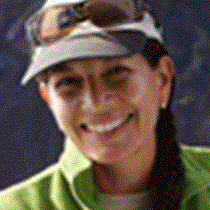Bartolomé and Rabida Islands
Located just off the southeast coast of Santiago Island, Bartolomé is a tiny little islet named after Bartholomew Sullivan, 2nd lieutenant on the HMS Beagle.
Found in the rain shadow of the larger islands of Santiago and Santa Cruz, the drought conditions that occur here do not allow many plants to grow. Only a few plant species can withstand the very dry soil and conditions, such us a gray mat plant, named “Tiquilia nesiotica.”
The volcanic moonscape of rust-colored "spatter cones" contrasts with large pale tuff cones and lava flows, where the action of erosion over time has created outstanding formations such as Pinnacle Rock, near a golden beach, made by a mixture of soft volcanic ash, white coral, shells and volcanic minerals, bordered by green mangroves creating a unique landscape mosaic.
Our morning started before breakfast, landing at a small pier and walking by a long wooden staircase up 399 steps over the steeper inclines, to reach the top of the island where the views are breathtaking! A juvenile Galápagos hawk was following the groups, and lava lizards were all around while a Galápagos snake patiently looked for its prey.
After breakfast we distributed snorkel gear and landed immediately on the beach of Bartolomé, where in the nearby shallows our adventurous snorkelers found hundreds of fish, sea lions, white-tip sharks, rays, and a couple of penguins!
In the afternoon our younger explorers started working on their daily journals, and by the time they complete their first entry it was time to kayak or snorkel again, this time on a different island—Rabida.
Rabida, or Jervis Island, has one of the most unusual beaches ever seen. Sand made from lava with high iron oxide content has created a red beach where sea lions spend their resting hours. We also found a few flamingos enjoying a brackish lagoon located near the saltbush along the shoreline.
In 1975 the Galápagos National Park Service successfully eradicated introduced goats from this island. The next step would be the eradication of introduced rats, a step that hopefully could restore the island to its original balanced ecosystem.
This is the world that Charles Darwin visited in 1835, and which shaped evolutionary science forever by inspiring his then novel concept of natural selection and survival of the fittest.




